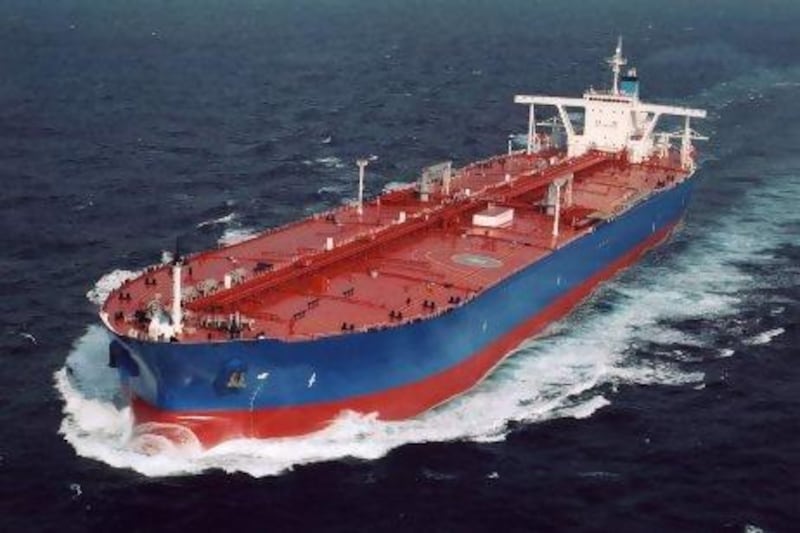A glut of the world's largest oil tankers has caused a collapse in the charter rates on the oil industry's busiest trade route this week, according to figures released by the Baltic Exchange.
Daily earnings for the very large crude carriers (VLCCs) plying between the Arabian Gulf and Japan fell from US$3,997 (Dh14,680) to $962, said the London-based exchange, the world's only independent source of maritime market information.
The drop of 76 per cent was the biggest since last September, as the supply of vessels, each capable of carrying 2 million barrels of crude, overwhelmed demand to charter the ships. The forecast for the next month is just as gloomy, according to the Bloomberg News regular shipbrokers' survey.
"Ships for hire over the next 30 days outnumber cargoes by 22 per cent, the biggest excess since September 5, according to [our] median estimate of seven shipbrokers and owners," said the survey.
"Charterers are in total control due to the overwhelming amount of tonnage in position within the month," said Oslo-based shipping and investment-banking company Astrup Fearnley in a note to clients.
The figures show that VLCCs making the voyage earned money in only four sessions during the third quarter.
The Worldscale system, another method for pricing oil cargoes, also showed a major decline in charter rates. Earnings for VLCCs on the route lost 5.7 per cent to 34.72 Worldscale points, the 11th decline in 12 sessions.
Under the Worldscale, a voyage is assigned an optimum rate once a year, measured in dollars per tonne carried. Current levels mean each tanker plying between the Arabian Gulf and Japan earns 34.72 per cent of that optimum Worldscale rate for the voyage.
The oversupply is exacerbated by vessels booked two months ago now returning to the Gulf seeking cargoes, according to Per Mansson, the managing director of the Swedish shipbroker Norocean. "December and January did not pick up as we thought. It's going to be tough. We will work with a big overhang of vessels every month."
This week's figures continue the retreat from a mini-rally in rates last November, during which South Korean, Chinese and Japanese demand for oil shipments strengthened before winter. There were 141 tankers hired for loading during November in the Gulf, the most since the previous December.
"Cargoes for loading in November took away a lot of the vessel supply overhang," said Mr Mansson at the time, as he accurately predicted "demand will probably continue for a little while, one or two weeks at best."
The tankers were earning $28,316 a day in November on the Gulf-to-Asia voyage, more than double the previous week's rates, reported the Baltic Exchange, and almost 30 times that of this month's earnings.
Despite the glut of tankers, the amount of capacity is still expected to rise this year, according to Clarksons, the largest global shipbroker.
The combined carrying capacity of the world's VLCCs will expand 5.3 per cent this year, however, said Clarksons.





